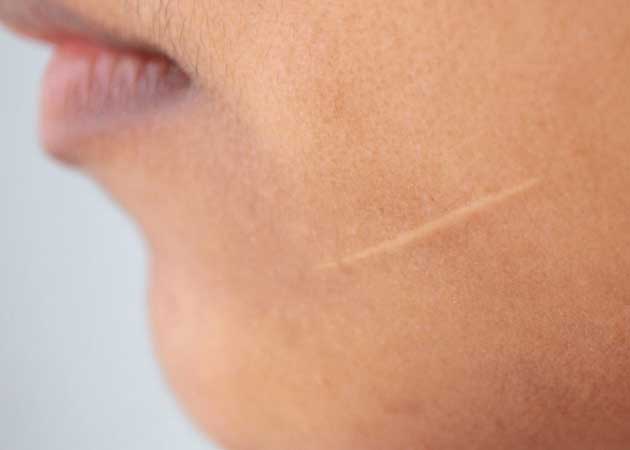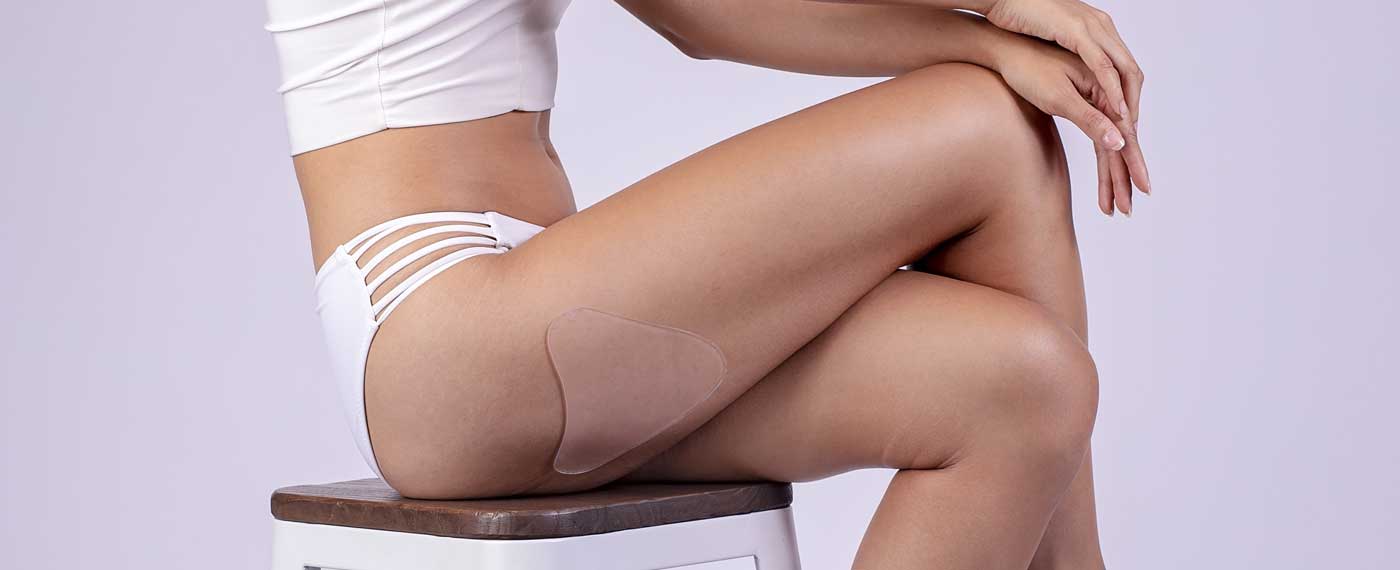It’s well-known that silicone gel sheeting has treated skin injuries such as keloid scars in the medical industry for over 30 years.
According to the National Library of Medicine (National Center for Biotechnology Information), “Scars vary greatly in quality, depending on individual and racial patient features, the nature of the trauma, and the conditions of wound healing. They frequently determine aesthetic impairment and may be symptomatic, causing itching, tenderness, pain, sleep disturbance, anxiety, depression, and disruption of daily activities. Other psychological sequelae include posttraumatic stress reactions, loss of self-esteem, and stigmatization, leading to a diminished quality of life. Scar contractures also can determine disabling physical deformities. All these problems are more troublesome to the individual patient, particularly when the scar cannot be hidden by clothes. This study was undertaken to verify the efficacy of a new topical silicone treatment, a self-drying spreadable gel that needs no means of fixation and cannot be seen because of complete transparency.”
Silicone gel contains long-chain silicone polymer (polysiloxanes), silicone dioxide, and volatile components. Long-chain silicone polymers cross-link with silicone dioxide. It spreads as an ultra-thin sheet and works 24 hours per day. It has a self-drying technology and dries within 4-5 minutes. It has been reported to be effective and produce an 86% reduction in texture, 84% in color, and 68% in height of scars. Silicon gel exerts several actions which may explain this benefit in scars:
• It increases stratum corneum hydration and thereby facilitates regulation of fibroblast production and reduction in collagen production. It results in softer and flatter scars. It allows the skin to “breathe.”
• It protects the scarred tissue from bacterial invasion and prevents bacteria-induced excessive collagen production in the scar tissue.
• It modulates the expression of growth factors, fibroblast growth factor (FGF), and tumor growth factor (TGF). TGF stimulates fibroblasts to synthesize collagen and fibronectin. FGF normalizes the collagen synthesis in an abnormal scar and increases the level of collagenases, breaking down the excess collagen. The balance of fibrogenesis and fibrinolysis is ultimately restored.
• Silicone gel reduces itching and discomfort associated with scars.

The advantages of silicon gel include easy administration, even for sensitive skin and children. It can be applied for any irregular skin or scar surfaces, the face, moving parts (joints and flexures), and any size of scars.
SilcSkin has provided skin care solutions for wrinkles, fine lines, crepey skin, and scars from injuries and pimples for over 20 years. Following a specific and straightforward procedure is essential for maximum benefit from SilcSkin medical-grade silicone pads. Here’s what you must do to make sure your SilcSkin pads work efficiently:
• Make sure the chest area is thoroughly clean, dry, and free of moisturizers, sunscreens, etc. Sweating at night may interfere with adhesion. Dry well.
• Remove the pad from the packaging. Remove the storage tray. Cut open the poly bag containing the pad. Remove the pad from the backing.
• The pad is self-adhesive. The pad will begin to lose adhesive qualities in approximately 30 days. Once this happens, apply a new pad.
• Apply the pad to the desired area of the chest. You can put on the pad when going to bed or any time of day. For best results, wear while sleeping and gently remove in the morning.
• Remove the pad slowly in the morning in an upwards motion. Place on the storage tray, and put the tray inside the packaging. Insert the tab on the package into the slit to close.
• Wash pads occasionally to remove exfoliated skin cells that may interfere with the adhesive quality of the pad.
• Wash pads with a soap-free of moisturizers, emollients or oils. ie. SilcSkin Cleanser or Baby Shampoo. Allow the pad to air dry face up on the storage tray in a clean location. Or the pad may be dried with a blow dryer. Do not dry with a towel. Once dry, place face down on the tray and return to package.
That’s all there is to it. Make it even easier by wearing the pads while sleeping. That’s a good 6 to 8 hours where the pads do their magic.


